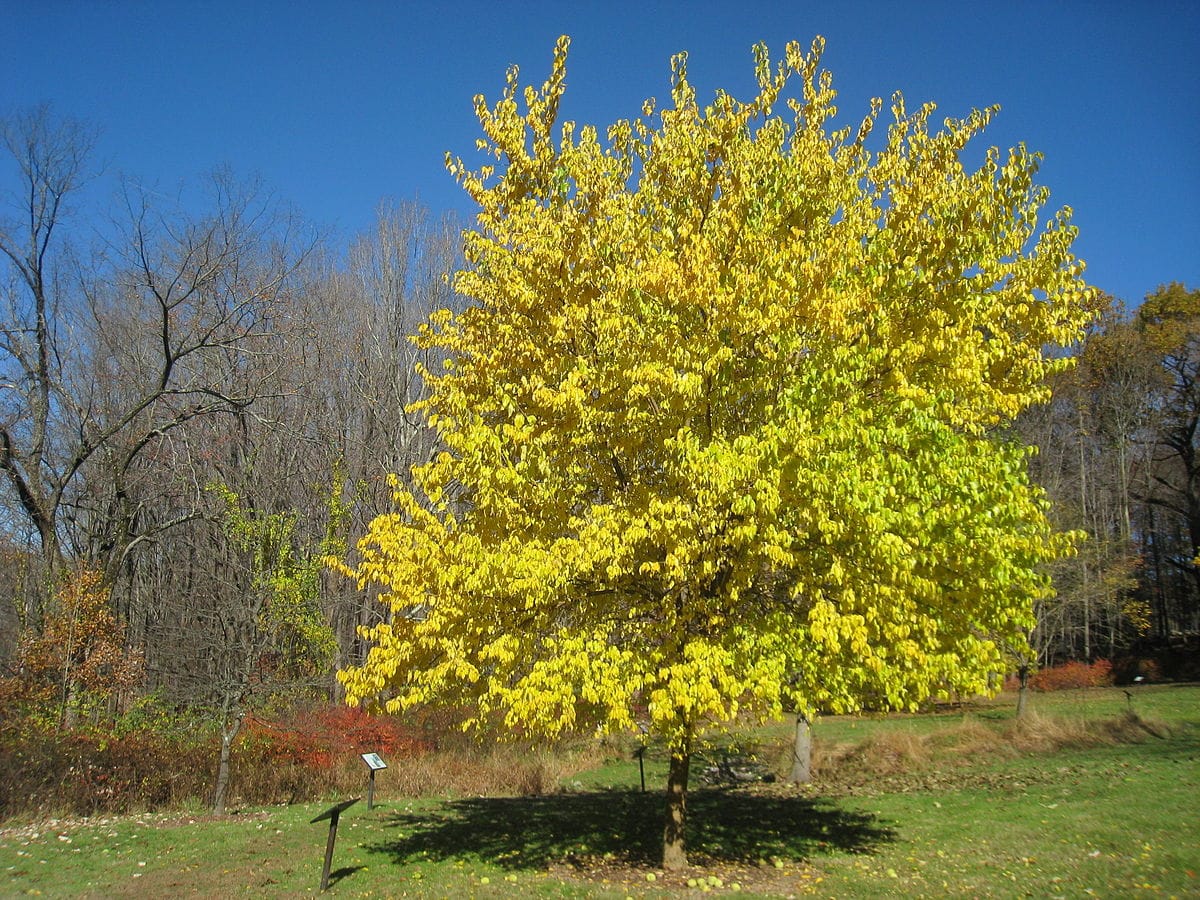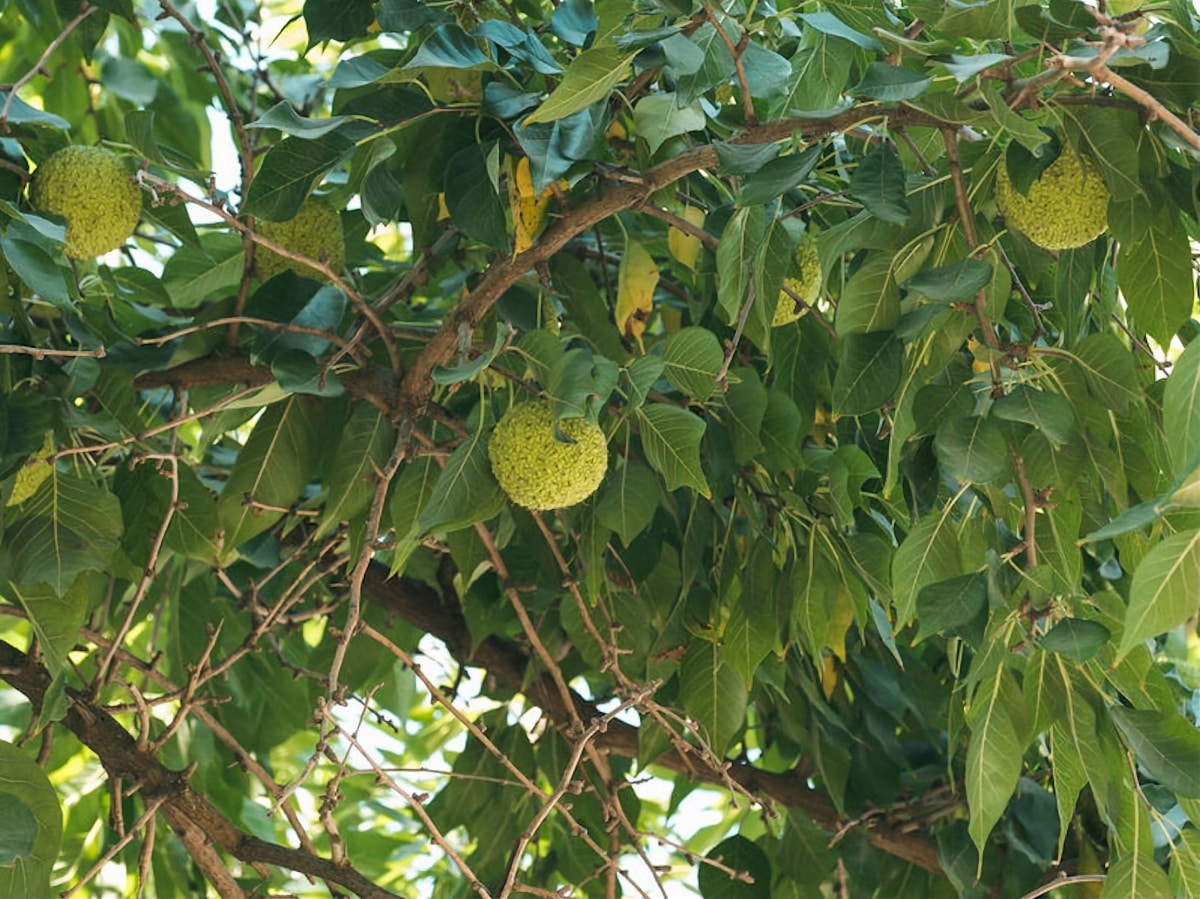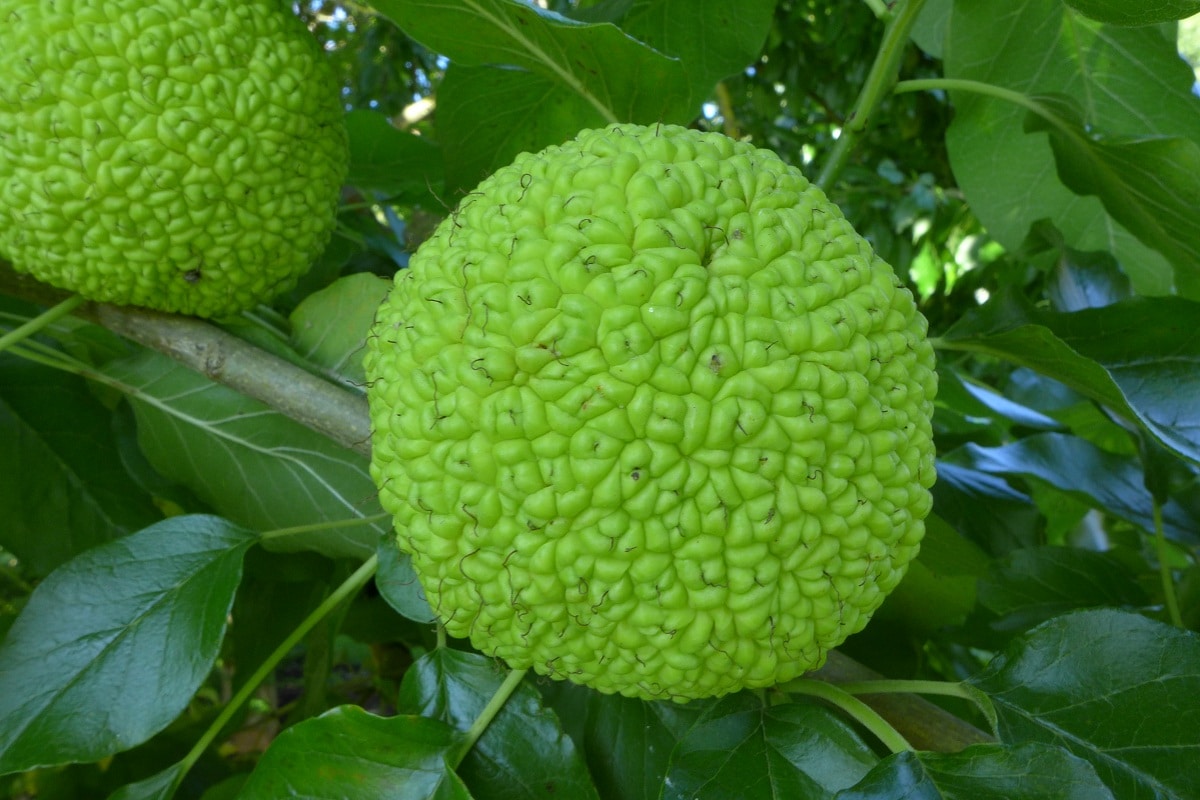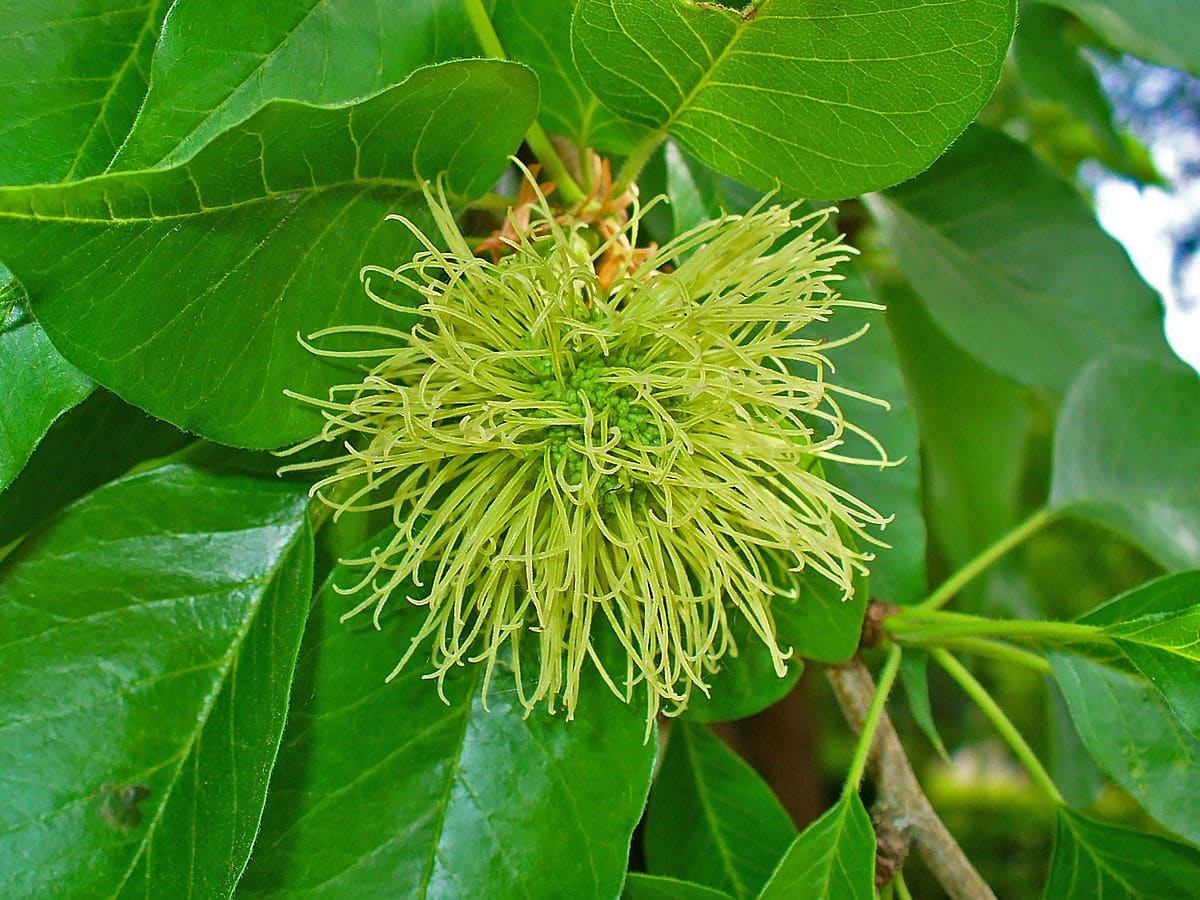
Today we are going to talk about a type of tree that is native to Asia, America, Africa and Australia. Its about Madura trees. Its common name is Louisiana orange tree and it belongs to the genus Maclura of the Moraceae family. This family is made up of more than 10 species of trees. It is also known by the name of the Osage orange tree and comes from the southern United States.
In this article we are going to tell you all the characteristics, care and curiosities of the Maclura pomifera.
Key features

It is a type of deciduous tree that has a rounded crown and multiple branches with thorns. These trees they can reach a size of about 15 meters in height either the conditions are right. It has whole and alternate type leaves, oblong texture has and a somewhat wavy margin. We can see that the leaf is bright green in the bundle and in autumn they turn yellow before falling. It is one of the trees that makes the arrival of autumn look better as it colors the landscape.
Its flowers are greenish in color and have little decorative interest. It is not a tree that flowering is expected to increase the aesthetics of the garden. Flowering takes place in late spring to early summer when temperatures are higher and it has been possible to collect water from winter rainfall.
He has a curiosity and they are its fruits. SHe calls it an orange tree because the fruits are very similar to oranges, but in reality they are globose groups of small united fruits. If you look at it from afar, you can see how the tree looks like an orange tree. That's where its name comes from.
Uses of Madura trees

This tree is used as a screen to reduce road noise and windbreaks. They are usually seen located in rows on avenues or in parks to increase green areas. They also serve to provide some shade and can be shaped dry with a shrubby appearance. For the decoration of the streets the Madura trees it can become somewhat annoying in those female specimens. And it is that the females produce fruits that can become quite annoying if they are not collected.
With the passage of time they can and leave bad smells. For themwith trees that require little maintenance if they are installed in avenues and parks. We can also have it in our garden to have an arboreal contribution and some shade. Many people use the Louisiana orange tree to decorate their gardens, reducing the noise of cars entering the home. It also helps to reduce the wind in those strongest gusts and in those areas where it blows with more force.
Thanks to its low maintenance, it is usually a tree that is found quite frequently in cities. It also serves to decorate the most acclimated areas, especially in the fall season. It is its yellow leaves that attract the most attention since they indicate the passage of time and the arrival of winter.
Caring for the Madura trees

Being a tree that is easy to grow, you don't have to think too much about its maintenance. This is one of the reasons why it is used very frequently. You just have to worry about collecting the fruits of those specimens that are female and that can generate bad odors because they are rotten. The appearance they acquire when they are on the ground also generates a bad image.
We are going to analyze the requirements and care that the Louisiana orange tree needs. The first thing we must take into account is the place where it will grow. It needs a sun exposure to be able to develop in good conditions. It is a lover of pleasant temperatures that allow it to develop well. It does not tolerate much frost, so it will be necessary to see the climate of the area where we are going to plant it.
They can grow in almost any type of soil even if it is poor, as long as it is well drained. This means that we cannot let rainwater be stored. Both rainwater and stored irrigation water can rot the roots of the Maclura pomifera. It is preferable those soils that have some contribution of organic matter so that they can have a better flowering and fruit. Although the most striking thing about this tree are its leaves, we must not forget that the flowering and ripening of the fruits is part of its life cycle.
It has very good resistance to drought, so the waterings should not be very abundant. Rather, it needs moderate watering and wait for the soil to dry out before watering again. If the area where you are living has abundant rainfall, you may not need to water it in winter. Although it does not need special fertilizer, it appreciated a light contribution of compost in early spring to have more strength and nutrients in its flowering stage. We remember that it can thrive in poor soils, although it is not the most indicated.
Maintenance and pests

El Madura trees needs a pruning at the end of winter so that it can have a more compact appearance for the flowering season. You can do the pruning in the part of the crown or if it can be used as a hedge. There are people who use this tree as a hedge and need to do a more elaborate pruning. This serves to give it the shape we want and increase the decoration in the places where we place it.
As for pests and diseases, it is quite resistant to them, so we should not have too many problems. You have to take into account excess humidity and be careful with low temperatures. If the winter has enough frosts, this tree could suffer and not reach the next flowering season.
If we want to reproduce the Madura trees, you can extract the seeds from its fruits and sow them in spring. Another faster method is to do it using cuttings.
I hope that with this information you can know more about the Maclura pomifera.
I can plant this tree in Colombia.
A country that has no seasons of the year.
How can I get the seed?
What height above sea level would be recommended for cultivation.
Hello Cristian.
No, it would not do well in a place where the climate is tropical. It needs to be cold in winter to lose its leaves and thus rest. On the other hand, yes, it would be good mangosteen (its scientific name is garcinia mangostana), which is also fruity. You have more information in the link.
Greetings.